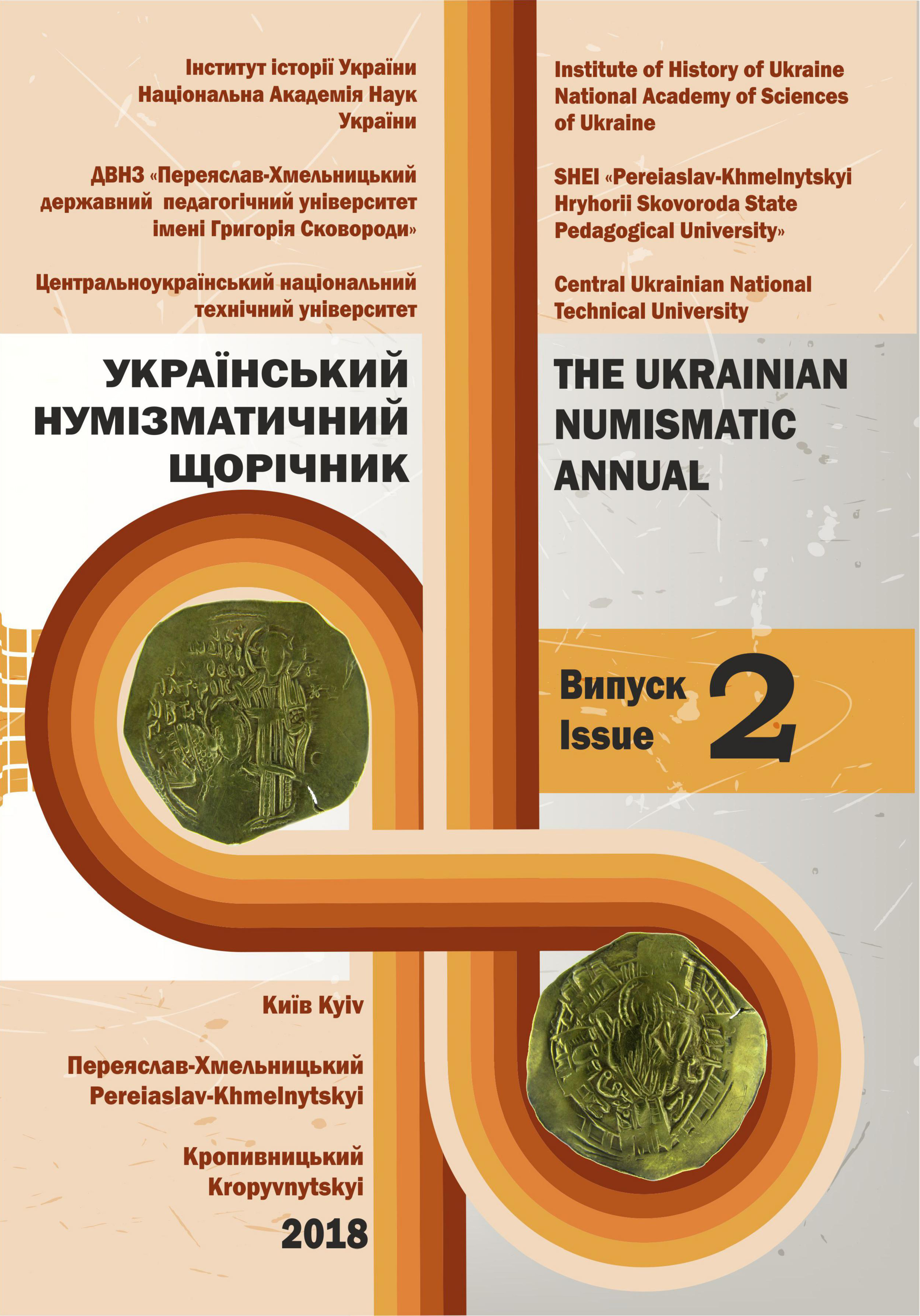ТЕСТОН ПОНТИФІКА ОЛЕКСАНДРА VIII З КОЛЕКЦІЇ НАЦІОНАЛЬНОГОКИЄВО-ПЕЧЕРСЬКОГО ІСТОРИКО-КУЛЬТУРНОГО ЗАПОВІДНИКА
THESTONE OF THE PONTIFF ALEXANDER VIII FROM THE COLLECTION OF THE NATIONAL KYIV-PECHERSK HISTORICAL AND CULTURAL RESERVATION
Author(s): Victor KotsurSubject(s): History, Economic history
Published by: ДВНЗ Переяслав-Хмельницький державний педагогічний університет імені Григорія Сковороди
Keywords: Papal State; Alexander VIII; testone; National Kyiv-Pechersk historical and cultural reservation;
Summary/Abstract: As we know, the monetary circulation of Ukraine since the appearance of the earliest coins until the Modern time can be characterized as saturated with a huge variety of coins, combining a different denominations and issuers. The highest point of the diversity of coins happens in the XVII century. In the second half of the XVII th century, coins of the Polish-Lithuanian Commonwealth, the Muscovite state, the Ottoman Empire, large silver coins of the United Provinces of the Netherlands, and the coins of the Brandenburg-Prussia (as well as many other Germanic states) are commonly excavated in treasures and isolated finds in Ukraine. Less commonly in the consist of the treasures are the coins of Scotland, Ragusa (or Dubrovnik), the French kingdom, England, and Italian lands, which causes us an increased interest. Findings of rare coins, in our opinion, serve as a very significant marker in the study of the systems of international trade and economic communications of Ukrainian lands in any historical period, which is especially relevant in the context of the current political course of Ukraine for integration into the EU, where the numismatics is once again proves the presence of ancient and traditional vectors of orientation of the Ukrainian market and the economy of the West. In the process of researching of rare coins from the collections of state museums in Ukraine, our attention was drawn to the silver teston minted in the Pontifical State in Rome in 1690 on behalf of the Pontiff Alexander VIII (1689-1691), and stored in the collection of the National Kyiv-Pechersk Historical and Cultural Reservation in Kyiv. The coin is made of silver, weights 9.10 grams and has 31 millimeters in diameter. The obverse of the coin depicts a profile of the pontiff Alexander VIII, turned to the right. The Pope is dressed in a mantle, in decorations which reveal plant ornaments and the image of an eagle. Below is a signature of the HAMERANVS inscription pointing to the famous Roman medal engraver – Giovanni Martino Hamarani. Since the 1679, Giovanni Martino has been working on the creation of dies of coins and medals for the Vatican’s Popes: Clement X, Innocenty XI, Alexander VIII, Innocenty XII and Clement XI. The circular legend of the obverse indicates the name of the pontiff ALEXAN: VIII * PONT: MA: I:. The edge of the coin is decorated with a circular rim similar to the rope. The reverse of the coin depicts in center the two oxen with a plow. On the top of the coin is the circular legend RE * FRVMENTARIA * RESTITVTA, which translates from Latin as “Grain processing”. The date is written in the form of Roman numerals MD-CXC – 1690 year of mint. An interesting feature of this coin is the way of writing of it’s date using letters punches C and I instead of the letters punches M and D, putting the actual letters of the CIC and IC together on the stamp. This practice was used to create stamps in case of the damage or loss of the required letter punch. Probably, the upper and lower part of the legend of the stamp drawing were performed by various craftsmen (or their students). The coin also has a number of defects, both productive and acquired as a result of careless storage and exposure. In the center of the reverse, we see the remnants of glue and velvet fiber. This is a consequence of gluing of the coin directly onto the fabric of the vertical display window. Also on the reverse there is a half of the lost inventory number marked with black ink. Both of these defects are acquired as a result of illiterate performance of stock and exhibit work. The Papal testone described above is quite rare both for state museum collections in Ukraine, as well as for coins that are in the private collections, it has a great historical and cultural value.
Journal: Український Нумізматичний Щорічник
- Issue Year: 2018
- Issue No: 2
- Page Range: 94-98
- Page Count: 5
- Language: Ukrainian

